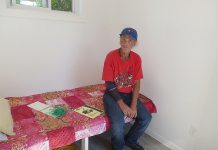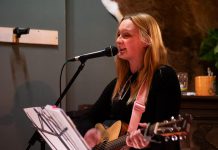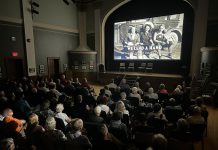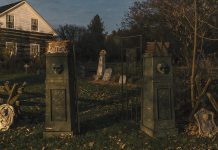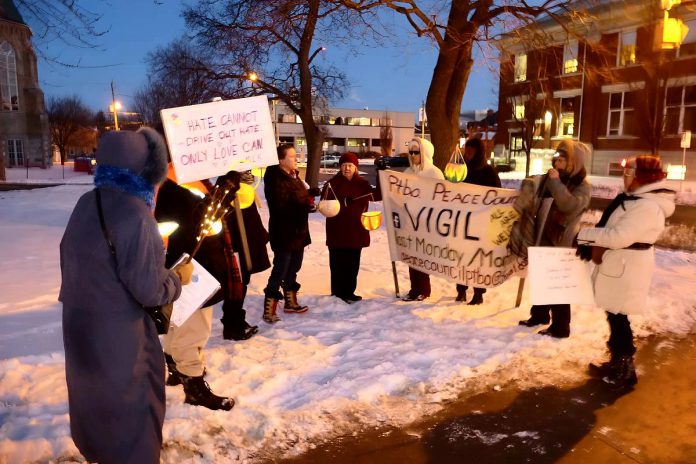
In the aftermath of the recent ice storm, a group of dedicated peace activists gathered in downtown Peterborough with lit candles for the 120th and final time.
At noon on Monday (March 31), members of the Peterborough Peace Council stood at the corner of George and McDonnel streets, as they have done so many times before.
Founded in November 2014 by nine people from diverse faith groups to foster compassionate non-violent direct action and conflict resolution through information sharing, the Peterborough Peace Council began holding a vigil for peace at the corner of George and McDonnel streets the last Monday of every month starting on March 30, 2015.
“At the vigil in the ice storm, as we completed 10 years of never missing (the vigil) on that corner, we lit candles from a candle that had been lit from a line of candles back to a candle lit by Nelson Mandela for peace,” Peterborough Peace Council member Margaret Slavin told kawarthaNOW about the most recent gathering.
The March 31 vigil was the council’s final regular vigil, and the group is now evaluating new ways to remain active in the community by promoting peace through other channels.
“In our first planning meeting, voices offered to work on bringing serious discussions across our differences about alternatives to war — about all the ways we already know about that can create an alternative (society) that does not lead to violence and killing, but operates from love and respect,” Slavin said.
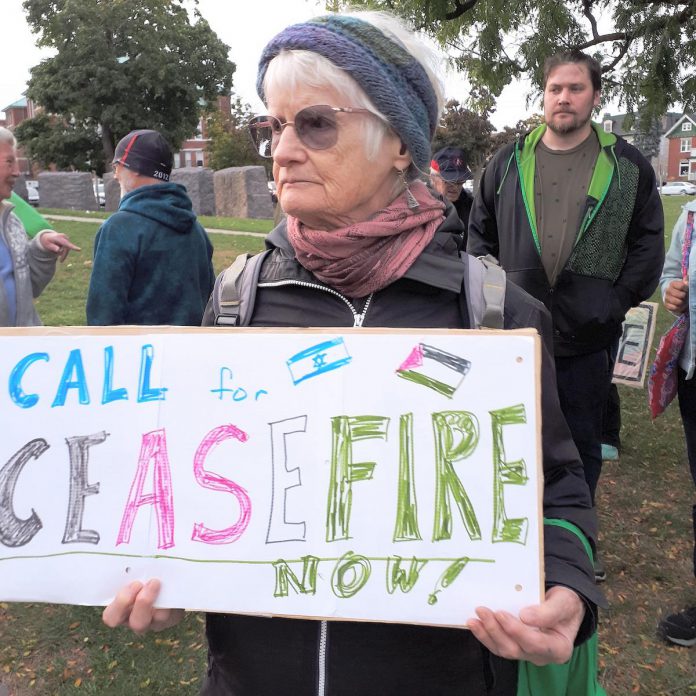
Slavin noted that the annual lantern ceremony, held in August on the shores of Little Lake to commemorate the dropping of the atomic bombs on Hiroshima and Nagasaki on August 6 and 9, 1945, will continue under the leadership of a new generation.
“We are looking for younger hands to take it over and help Peterborough reflect and remember about the ongoing threat of nuclear war and the firm and respectful ways to resolve our differences and to grow a more loving culture when we truly listen to one another,” Slavin said.
She said the group would like “to see at least one opportunity every month” to raise awareness about the alternatives to war.
“Every few months, we may want a vigil for peace again … to connect the dots between everything from climate chaos to domestic violence to genocides,” Slavin said.
Throughout the history of the Peterborough Peace Council’s vigils, people from many groups and from all walks of life have faithfully met at the monthly gatherings, a media release noted.
They got together in all kinds of weather, bearing their banners and signs through strong winds, cold winter days, and searing summer heat. They held pop-up vigils during the pandemic, offering chocolate cookies with a peace dove message underneath and handing them to passersby from a safe distance.
They gathered to mourn killings in other cities and the ongoing discovery of unmarked graves at residential schools. They drummed and sang to support a concern about retaining a wetland at Trent University. They passed around a talking stone which was a gift from Indigenous artist Randy Knott.
As for the council’s future, members held one planning session in March and will meet again at Sadleir House on Sunday, April 13, at 1 p.m. Anyone interested is invited to attend.
The council plans to work on initiatives “that unite and do not divide.” Future events will offer teach-ins, seminars, focused vigils and demonstrations, and “opportunities to cross boundaries of class, colour, faith and gender to find strength in common ground.”
In addition to the August lantern ceremony at Little Lake, the council’s members will wear orange in September in remembrance of Indigenous children who perished in residential schools, and will mark the UN days for ending gender violence in November-December.
For more information about Peterborough Peace Council, visit the Facebook group at facebook.com/groups/PtboPeaceCouncil.



